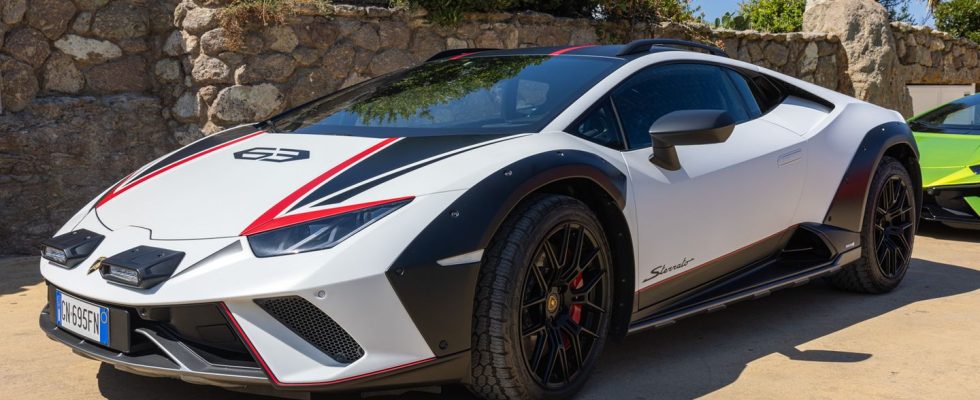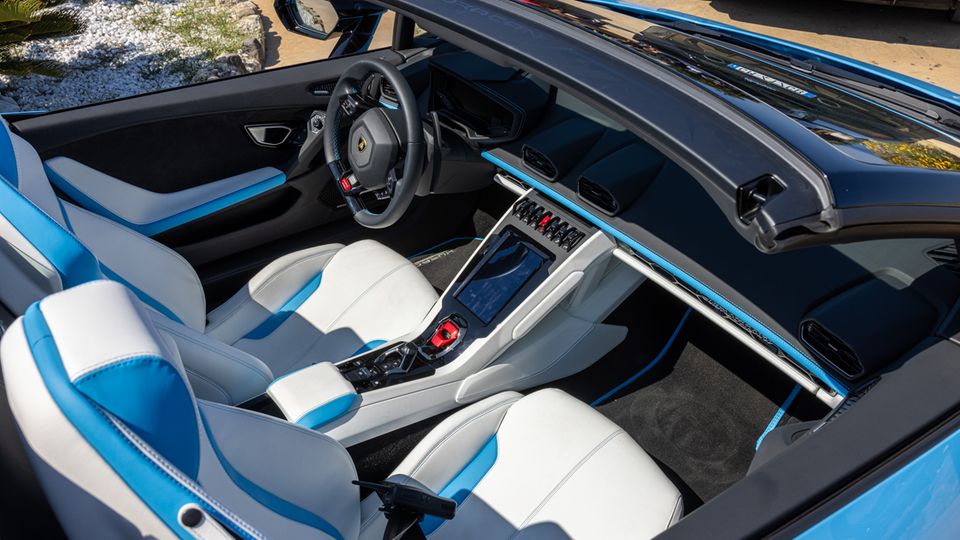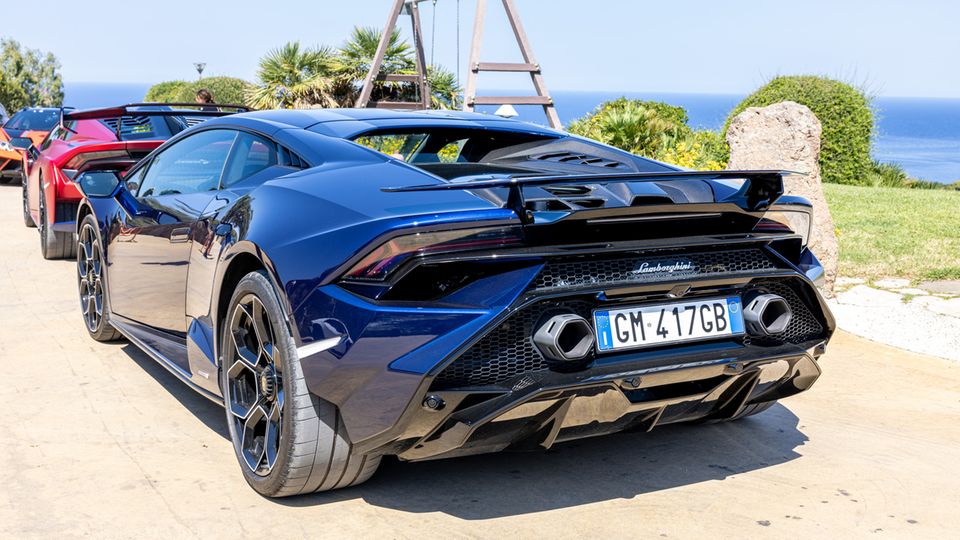test drive
Lamborghini Huracan – Sardinia with the V10
Free start for the last lap before the successor arrives.
For many, it remains a dream to drive a Lamborghini once in their life. On the Italian Mediterranean island of Sardinia, the Huracan was tested in its full range with all four variants during the “Ultimate Huracan Family Drive”.
After it was very rainy at home during the summer months this year, late summer is really going to be a blast again. On The sun is shining in Sardinia when we see the first rays of sunshine of the new day after a late arrival and a short night’s sleep. I also catch myself subconsciously letting out a nasty laugh or two. This happens automatically when you press the Huracan’s accelerator pedal into the floorboard during short sprints. First the V10 engine howls briefly, then you cuddle very intensively with the seat – almost like in a high-powered electric car, except that you are warned acoustically beforehand. Just like everyone around it.
A total of eight Huracans were available. Two of each type – two each of Sterrato, Tecnica, Evo Spyder and STO, plus two Urus as support vehicles. Roughly speaking, we’re looking at just over three million euros. The Aventador successor Revuelto is also on display in the lounge, Lamborgini’s new 6.5 liter V12 plug-in hybrid, which is supported by three electric motors and produces 747 kW/1,015 hp. It is currently Lamborghini’s most powerful production vehicle.
Challenging country roads
It starts in Lamborghini’s “all-terrain” version of the Huracan, the Sterrato. The 5.2 liter V10 naturally aspirated engine produces “only” 449 kW/610 hp and it “only” reaches a speed of 260 km/h, so according to the numbers it is the baby of the Huracan family. But the Sterrato can do other things: thanks to a 4.4 cm lift (actually an outrage for super sports cars!), off-road tires and all-wheel drive, it moves stably even off-road.
Without it it gets a little louder
© Mike Neumann / mid
Our test route leads over various, not always well-maintained country roads, and here the Sterrato shows its everyday qualities: the suspension works great and, despite the bucket seats, we almost feel like we are in a comfortable limousine – except that you can only use the rear-view mirror to put on make-up, as the Rear window cover makes everything tight. If you have the necessary capital for a Sterrato and want to buy one, you should go for it, exactly 1,499 examples will be built.
Hard or even harder
At the first stopover, the vehicle is swapped. The journey continues in the Super Trofeo Omologata or STO for short – probably the most brutal of the Huracan family. We already had the opportunity to test the rear-wheel drive STO extensively at a track day in Baden-Baden and it’s been buzzing around in our heads ever since. The performance of the V10 increases to 470 kW/640 hp, the torque climbs by 5 Nm to 565 Nm, the acceleration drops from 3.4 to 3.0 seconds from 0-100 km/h and thanks to sophisticated aerodynamics and Brembo CCMR braking technology In Formula 1, this track monster brakes from 100-0 km/h in just 30 meters. The large snorkel supplies the engine with sufficient fresh air and the thick wing contributes 420 kg of downforce at 280 km/h – the top speed is even 30 km/h higher at 310 km/h. The body of the STO is made of over 75 percent carbon, which means the curb weight is only 1,339 kg: so we’re talking about an output of more than 2 hp per kg – crazy. Comfort is secondary here, the arm cannot be rested on the door and the bucket seats nestle perfectly – the driving modes can be adjusted between “hard” and “harder”, making it a road-legal track tool.
After the lunch break, the thermostat reaches over 30 degrees in the shade, ideal conditions for the Huracan Evo Spyder. Once the roof has been retracted, we continue topless. And the Spyder even crowns the pure performance data of the Huracan family. Thanks to all-wheel drive, the torque increases further to 600 Nm, like the STO, the V10 also produces 470 kW/640 hp and the top speed is specified as 325 km/h. Of course we don’t drive these in Italy; the Spyder is rather very comfortable. It is the only one of today’s Huracans that does not have bucket seats, but rather electrically adjustable sports seats, which are a welcome relief for the back after previous journeys. The sound of the Huracan also comes across as a whole lot more extreme without the roof.
Discreet looks different, the car is greeted with joy in Italy.
© Mike Neumann / mid
Last hurray for this generation
The last model left is the Tecnica, basically the best mix of all worlds, again with rear-wheel drive and of course the 5.2 liter V10 naturally aspirated mid-engine. A little more subtle in appearance (not in color), a little more comfortable inside and a Huracan in every way. This means the driving dynamics networking system LDVI, torque vectoring, a modified Performance Traction Control System (P-TCS), very direct steering including rear wheel steering and sophisticated brake cooling.
What you should keep in mind: with a Lamborghini you stand out everywhere: we are honked at, cheered on and filmed by passers-by – understatement is different, and that’s exactly what makes this brand special in our eyes.
The successor to the Huracan is on the agenda for 2024.



